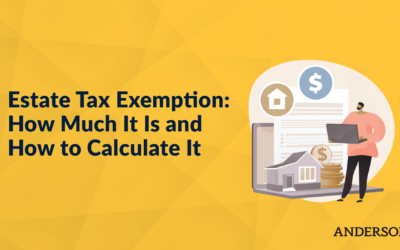Updated September 30, 2021
A home appraisal involves a home appraiser going to a residence and assessing its value. There will be a number of factors a home appraiser will look at to determine your home’s value. Their professional assessment will provide an estimate of what the home is worth on the real estate market.
6 Reasons to Invest in a Home Appraisal
- Verify Value
- Extend a Line of Credit
- Estate Planning
- Remove PMI
- Lower Taxes
- Selling or Buying a Home
There are a number of reasons why a homeowner might solicit the services of a professional home appraiser. Appraisals are most commonly used in sale transactions and during the refinance process. In the former, the goal of the appraisal is to determine whether or not the contract price accurately reflects the value of the home based on factors such as its condition and location. In the latter, the goal of the appraisal is to assist a lender in extending an appropriate loan amount factoring in the property as potential collateral.
Usually, an appraisal is requested by a lender, with the borrower paying the appraisal fee. It’s typically a few hundred dollars to have an appraisal done, depending on the area of the home.
A home appraisal is meant to determine a home’s value, not necessarily for pinpointing issues with its condition. A home appraisal should not be confused with a home inspection. Anyone purchasing real property should solicit a home inspection on their own behalf before they enter into negotiating a price with the seller.
Once the two parties have expressed an interest in moving forward with a sale, if the homebuyer needs a loan, the lender will request a home appraisal, typically using an approved appraiser in their network. A qualified appraiser should be licensed and insured, just like any home inspector or contractor who enters a property to perform work. Federal law requires that a home appraiser be unbiased in the matter of the transaction in order to avoid falsifying any information in favor of the lender or borrower.
A good appraiser should also be familiar with the neighborhood and the area in which he or she conducts appraisals. This is because a large part of a home’s value is determined by assessing comparables—that is, properties that have recently sold or are under contract in the same vicinity.
Amenities and improvements will also be factored into the appraisal, such as the number of bedrooms and bathrooms, the square footage, garage space, and landscaping features. However, the appraiser cannot just look at an architect’s floor plan or browse the internet to examine recently sold properties. The assessor must conduct a thorough, in-person walkthrough, performing a thorough visual inspection and taking note of any conditions that necessitate address or repair, both of which could negatively impact the assessed value of the property.
It’s important to realize that a home’s appraised value may not necessarily reflect its market value, and in many cases, it doesn’t. Home improvements, natural wear and tear, and other factors can contribute to the appraiser presenting a different figure of a home’s worth than one would find just by looking at a property listing on the internet.
This is why banks and other mortgage lenders insist on an appraisal before extending credit. If the appraised value is below the contract price, for instance, the bank will only extend the lower of the two values. The buyer and seller will either have to negotiate a new price, walk away from the sale, or have the buyer make up the difference in cash.
The home appraisal process is just one of many checkpoints for lenders to ensure they are not overextending lines of credit.
What is a Home Appraisal?
As mentioned, a home appraisal is the process of determining a home’s value, taking into consideration the home itself and other comparable properties.
A certified residential appraiser must complete the process of providing a property valuation. It cannot be based on fair market value estimates listed on a website like Zillow or Redfin. It’s unwise for a lender to use these listed sale prices because they may actually not reflect the true property value.
For example, a home listed for $250,000 may not reflect improvements made by the property owner that boosts the property value far above any similar property. A real estate appraiser is needed to take a closer look at the appraisal process to determine the home’s value.
Remember, every dollar a lender provides is extended at their own risk. To mitigate the risk of a complete loss, lenders will typically want some sort of collateral. In the case of a home loan—whether it’s a VA loan or a typical consumer mortgage—the house itself will be the collateral. But the collateral has to equal the amount of the loan, otherwise, there is a gap for the lender between the risk they are taking and the collateral they could recoup.
If someone wants to buy a home with a purchase price of $300k, for example, and a property appraiser finds that the home is actually only worth $250,000, the mortgage lender is looking at a $50k gap. Based on the real estate appraisal, this would not be a smart financial move for the lender.
Sometimes a home appraisal can throw a wrench in a good deal. In the situation above, the buyer would not be able to secure a mortgage unless the seller lowered the sales price, something they might not be willing to do. The buyer can always shop around for another mortgage lender, but this process takes time. In the case of VA loans, there is a process whereby a buyer can request a review.
Most home appraisers typically use a standard form called the Uniform Residential Appraisal Report, which is provided by Fannie Mae. The appraiser will use this form to describe the neighborhood and the interior and exterior of the property, along with local comparables. The form requires certain types of information to be included, such as a calculation of the square footage, extensive photographs of the property, photos of comparable properties, a street map showing the appraised property in relation to comparable sales, and other relevant information like market price fluctuations, public records, and tax records.
How Much Does a Home Appraisal Cost?
A lot of factors go into home appraisal costs. One such factor is the size of the home being appraised. A smaller two-bedroom townhome will be easier to appraise than a 10 bedroom/three-story mansion with a pool.
It also depends on the condition of the home. A newer home with relatively few issues will be easier to appraise than a century-old historical property with numerous structural issues. However, generally speaking, the average home appraisal costs $335, with numbers ranging from $200 to $600. When you think about it, that’s a pretty low price to pay for something that could secure your real estate investment.
What Do They Look for in a Home Appraisal?
Appraisers are looking at the general condition of the property. They’ll look at everything: the walls, floor, roof, windows and doors, foundation, and even trimmings like the gutters. They’ll take note of any defects that reduce the structural integrity of the property or the comfort of living therein. They’ll also take note of the home’s general upkeep, remarking on things such as peeling paint or leaky faucets.
A home appraiser will also look at how the home has been upgraded to improve its energy efficiency, such as a new HVAC system, improved insulation, or a new roof. Amenities that improve its enjoyment will also be noted, such as a deck or pool. However, it’s important to keep in mind that the maintenance factor of certain items may cause the home appraiser to reduce the added value of certain features, including water features like pools or fountains.
Sometimes an appraiser will not accurately factor in certain improvements, which is why it’s important to save paperwork and receipts from contracted work. For example, the appraiser may not be able to gauge how much it cost to install a built-in custom wine cellar, but if you save invoices, you’ll be able to make sure its accurately included in the home appraisal.
As previously mentioned, the general condition of the home and its upkeep is factored in, so keeping your home in good condition can go a long way towards a favorable appraisal. This means getting things fixed as they break, whether you need to call a professional, like an electrician or a plumber, or deal with aesthetic issues, like peeling paint, warped wood, or broken concrete.
It’s important to note that decorative elements like interior decor or movable furniture are not part of the appraisal. This can also include fixtures like ceiling fans and shutters.
Remember, that the home appraisal process is not the same as a home inspection. If the real estate appraiser does not also provide a home inspection (most don’t), you must make sure you obtain that as well. In fact, since home inspections are only a few hundred dollars, it’s best to pay for one before you even start negotiating the sales price.
6 Reasons to Invest in a Home Appraisal
Verify Value
The first benefit of a home appraisal relates to its most basic purpose: assessing the value of your home. While knowing the exact dollar amount of your home’s worth may not seem pressing, knowing this number can prove beneficial in mapping out your financial goals and future. This is especially true not only for homeowners, but for real estate investors as well.
If you are in the business of flipping houses, getting your properties assessed and knowing their true worth can help deflect lowball offers and give you a better idea of the resources you can leverage towards your next move. You may even consider having your property or properties assessed by a professional real estate appraiser as frequently as once a year, if your activity in the business is frequent.
Extend a Line of Credit
If you own a home, you can use that home as collateral to obtain a loan, whether that loan is to fund a child’s college tuition costs or to pay for renovations.
However, the bank or lender will need to know the exact value of your home so they can determine an appropriate loan amount. For example, extending a $200k loan to a customer with a property that’s worth $150k does not make financial sense for the bank. With a home appraisal, you can show lenders the true worth of your property in terms of collateral to secure the loan you’re looking for.
Many consumer homeowners exercise the option of taking out a HELOC (home equity line of credit), which is a loan based on the value of ownership that the consumer has in their property. It’s based on how much of the borrow has paid toward or improved upon the home—a number that can only be calculated with a home appraisal to determine the value of the home.
Estate Planning
Estate planning is the process of mapping out how to pass assets on to the next generation. They always say there are only two certainties in life—death and taxes—and estate planning involves both.
There are a number of mechanisms that a qualified financial advisor or tax advisor can offer to help avoid estate planning mistakes, but they need to know what they are working with in terms of assets and their value. This includes both liquid assets, like cash, stocks, and bonds, and illiquid assets like real property. Knowing the assessed value of a home can help determine if it’s best to keep it in the family or sell the property while balancing this information against other factors, like sentimental value and family tradition.
Remove PMI
Private mortgage insurance (PMI) protects the lender in the event that the borrower defaults on their loan. In most cases, the monthly premium for this insurance is tacked onto the mortgage payment made by the borrower, but sometimes it might be paid upfront.
Typical situations where PMI might become a necessary stipulation to acquire a loan include down payments or refinancing situations where the borrower has less than 20 percent of the equity in the home. To determine the home’s true value, you will need to have the property assessed.
One common instance where a home appraisal can be advantageous is if the home’s value has significantly increased since the loan origination. This would give the borrower more equity in the home. A home appraisal provides proof to the lender that the borrower owns enough equity to remove the PMI obligation. Keep in mind, however, that some lenders have different requirements regarding how much equity you need in the home to remove PMI.
Lower Taxes
Property taxes fund local budgets and are leveraged against homeowners in at least 36 states.
You might think that your taxes are set in stone, but they’re not. Tax percentages are stable (contingent on the local government and the voting population, of course) but the value of your home according to the government can fluctuate!
Your home’s value is on file with the county assessor’s office in your county. They will allow you to contest their assessed value of your property, but that will necessitate a home appraisal. You can start by checking comparable properties on the public record to see if your home’s tax burden might be reduced. If so, hiring a home appraiser, filling out the proper paperwork, and presenting your findings to a review board are all steps that could lead to a lower tax obligation.
Check with your county assessor’s office to learn about how the process works in your area.
Selling or Buying a Home
As explained earlier, if you are trying to secure a mortgage to purchase a property, the bank will likely require a home appraisal so they can avoid overextending themselves in terms of what they’re willing to lend. But even if you are purchasing a home without the help of a lender, hiring your own expert to conduct a home inspection and home appraisal is indispensable for gaining a favorable position during sale negotiations.
If you are selling a home, you may consider hiring your own appraiser if you feel strongly that the assessed value of the home is low. In some cases, this might be the best path forward for motivated sellers.
Let’s say a buyer’s potential lender assesses the value of a property at $200k and you, the seller, are hoping to obtain $250k. In cases like this, you will either need to lower your sales price or find a buyer that is willing to front more cash to close the gap. If you have your property periodically appraised, you can quickly furnish a document that shows the true value of your home on paper.
A Home Appraisal Shows the True Value of a Home
A home appraisal is a wonderful tool for homeowners and real estate investors to pinpoint the actual value of a property. Knowing this number can help move a transaction forward, obtain a loan, or help the homeowner plan for the future, whether that’s estate planning, securing a loan, or calculating real estate investments.
Most lenders only consider a home appraisal valid for three to nine months, so it’s important to have your property appraised periodically. For homeowners, the frequency of appraisal might be less than that of someone involved in real estate investing. Either way, given the many benefits of obtaining a home appraisal, it’s not a bad idea to have your home or properties appraised periodically to understand their true value and worth.
Bonus Video
Free Strategy Session with an Anderson Advisor
Receive a detailed risk assessment to assist in lowering problem areas that could wipe out all of your assets with one wrong move. Speak with an Anderson Professional Advisor to get your FREE Strategy Session.
Limited-Time Offer: ($750 value.)














